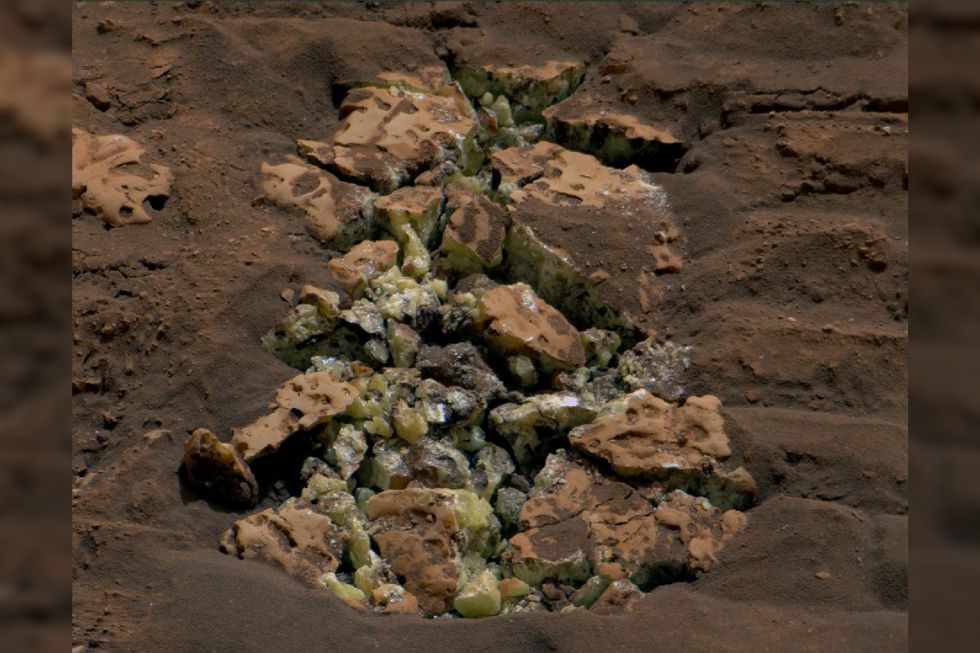Harriet Brewis
Jul 22, 2024
Curiosity Accidentally Breaks Open Boulder, Makes Monumental Discovery
ZMG - Amaze Lab / VideoElephant
NASA’s Curiosity rover has spent the past 10 years investigating a key area of interest on Mars.
And now, it has made an accidental discovery that is leaving experts stunned.
The exploratory device has been roaming Mount Sharp – a mountain which rises about 3.4 miles (5.5 kilometres) above the floor of Gale Crater, just south of the Martian equator – since September 2014.
But on 30 May of this year, it chanced upon an extraordinary find by driving over a rock.
This rock cracked open to reveal something never seen before on the Red Planet: yellow sulphur crystals.
And whilst this may not sound particularly exciting to the layman, scientist Ashwin Vasavada, of NASA’s Jet Propulsion Laboratory, stressed that “finding a field of stones made of pure sulphur is like finding an oasis in the desert.”

“It shouldn’t be there,” Vasavanda added in a statement, acknowledging: “So now we have to explain it.
“Discovering strange and unexpected things is what makes planetary exploration so exciting.”
Since October 2023, Curiosity has been exploring a section of Mount Sharp that is rich in sulphates – a type of salt containing sulphur which forms as water evaporates.
But where, previously, sulphur-based minerals – comprising a mix of sulphur and other materials – have been detected, the new rock cracked open by the rover presents something very different.
It is made of elemental, or pure, sulphur. And researchers are now trying to work out what relationship, if any, this elemental sulphur has to other sulphur-based minerals in the area.
Pure sulphur forms in only a narrow range of conditions that scientists hadn’t associated with the Mount Sharp location.
And yet, Curiosity found a lot of it — an entire field of bright rocks that look similar to the one the rover crushed, as NASA notes in the same statement.
Curiosity Rover Explores Gediz Vallis Channel (360 View)youtu.be
This region in which the rocks were found is known as the Gediz Vallis channel – a groove that winds down part of Mount Sharp.
According to the space agency, the channel was likely formed by large floods of water and debris that piled jumbles of rocks and sediment into mounds and created a long ridge downhill.
Interestingly, the rocks visibly don’t fit in with other materials seen in the landscape. And now that Curiosity has found them to be made up of sulphur, scientists are having to come up with new theories as to how they ended up there.
It is still possible that the stones were formed there. However, they may also have been carried to the Gediz Vallis by floodwaters or avalanches long ago.
It now falls to Vasavanda and his colleagues to attempt to explain the “unexpected” and uncover more about the history of this iconic planet and humankind’s potential future home.
Sign up for our free Indy100 weekly newsletter
How to join the indy100's free WhatsApp channel
Have your say in our news democracy. Click the upvote icon at the top of the page to help raise this article through the indy100 rankings
Top 100
The Conversation (0)














